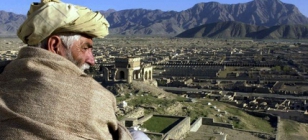Sign up to our newsletter Back to news
Afghanistan in India’s neighbourhood or rather India in Afghanistan’s neighbourhood?

What sort of partner is today’s Government of Afghanistan to India? From Afghanistan came the founding dynasty of the Great Mughal Empire, which dominated the Indian Subcontinent from the 16th century until the British established British India in the 19th century. From Central Asia through Afghanistan came Islam and expanded into India beyond even the Mughal Empire’s realm, and stayed. This historic background explains India’s inclination towards Afghanistan of today. During its first decades of independence, India cherished also a strategic and partly ideological inclination in favour of the now defunct Soviet Union. It was, thus, not a surprise when India was among the first, and the only South Asian state, to recognise the Soviet-backed Democratic Republic of Afghanistan after Soviet troops had attacked and occupied that country in 1979. India continued to support Afghanistan with humanitarian aid even after the Soviets withdrew from that country in 1989. That relationship ended only when the Pakistan-backed Taliban, a backward Islamist militia, seized power and established a reign of terror. With that, Afghanistan became a pawn in the perennial antagonism between India and Pakistan. During Taliban’s terror rule, Afghanistan became a generator of mujahideen fighters taking to Indian Jammu and Kashmir. During that terror rule, the World Heritage Bamiyan Buddha monuments dear to India, cradle of Buddhism, were destroyed. Afghanistan had become a security threat for India, as a supplement to the threat that Pakistan has been representing for half a century. And Afghanistan remains a threat, despite the dramatic ousting of the Taliban by the US air campaign of 2001, which abolished Taliban rule over Afghanistan in a few days. The US-intervention in the region changed a lot, but not all. The Taliban-led insurgency survives thanks to informal, but nevertheless obvious support by Pakistan. So, Pakistan can continue to instrumentalize parts of its neighbourhood in its decades-old fight against India. India, on its part, has engaged in Afghanistan as a model of Democracy and with generous popular assistance programmes and can again, in principle, count on Afghanistan’s Government as a strategic partner, however with limited effects only. Although, from 2000 on, Indo-US relations had started to improve, India’s adversary Pakistan was still an ally to the USA, certainly not a trustworthy one, but still an ally. Even the US raid on Abbottabad in Pakistan, which killed the international terrorist Bin Laden and revealed Pakistan’s collusion with international terrorism, did not finish the US-Pakistan alliance. So, India continues to be neighboured by overtly or covertly hostile China and Pakistan along its borders, one a strategic competitor, the other one a failing state, while its partner lying behind Pakistan, Afghanistan, cannot be fully relied upon for the strategic benefits it could provide. Afghanistan constitutes in the wider neighbourhood an essential transit corridor for India’s supply lines to Central Asian countries and to Iran and its port in Chabahar close to the entrance to the Persian Gulf. Afghanistan is the “missing link” on land, so essential in face of India’s difficult immediate neighbours. At the same time, China, an old strategic ally of Pakistan, is planning with Pakistan their own Trade and Transit Corridor from Kashgar (NW China) to the port of Gwadar (SW Pakistan), which will eventually compete with the Indian transit project through Afghanistan and Iran. This explains Chinas quiet, but relentless effort to get involved in Afghanistan infrastructure building and mining industry. This puts India under pressure to better use the re-built goodwill in Afghanistan. Vivek Katju, a former Indian Ambassador to Afghanistan and highest level Foreign Service official has pointed out in the Indian daily “The Hindu” of 15 October 2013 that India can certainly build on its standing in Afghanistan, but has to evolve new strategies to safeguard and advance its interests in Afghanistan. As long as general instability determines government policies and behaviour of Afghanistan and Pakistan, they command the strategic situation of the whole neighbourhood, while India seems to be asking itself who should take the first step to change this and what such a step should be. Dangerous instability will stay with the region for the time being.
17th October 2013 / Philippe Welti
Comments :
- No comments


Post a comment